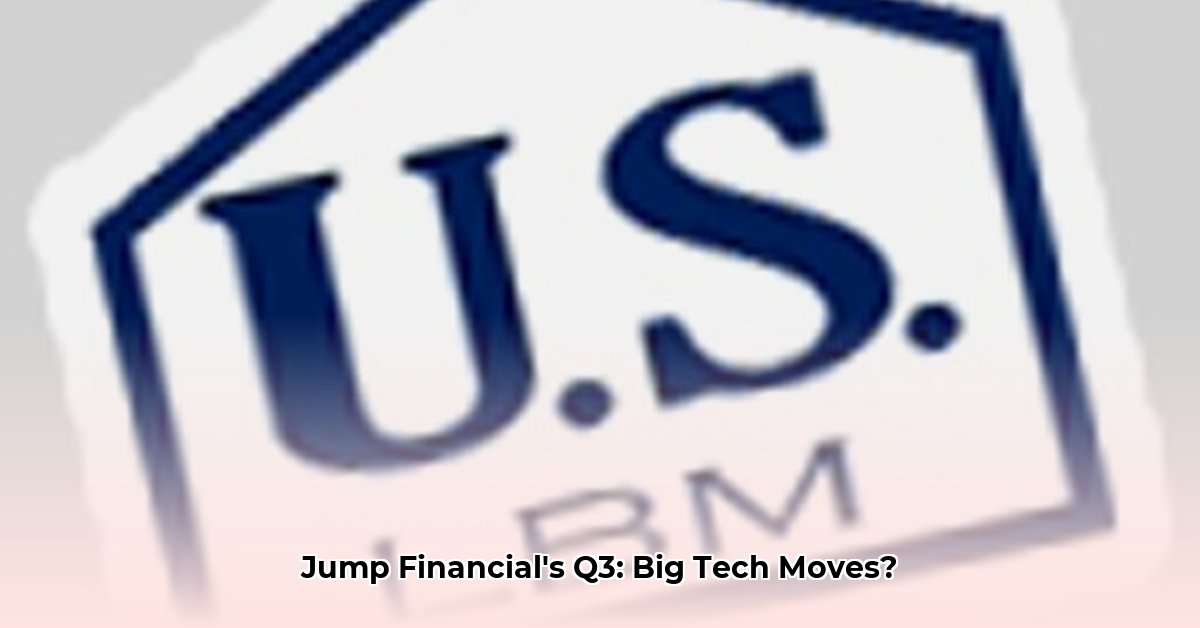
Jump Financial LLC: A Deep Dive into Q3 Investment Strategy
Jump Financial LLC's third-quarter 2024 portfolio reveals a high-velocity, technology-focused investment strategy. This analysis examines the key characteristics of their approach, assesses the associated risks, and explores mitigation strategies. Their exceptionally high portfolio turnover rate raises important questions about their risk tolerance and long-term investment goals. How sustainable is this aggressive, short-term approach? For more on market predictions, see this helpful resource.
Exceptional Portfolio Turnover and Concentrated Holdings
Jump Financial LLC exhibited an astonishing portfolio turnover rate of 52.02% (with some estimates reaching 56.22%) during Q3 2024. This indicates a very active trading style, characterized by frequent buying and selling of securities. Furthermore, their top ten holdings represented a significant 16.13% of their total portfolio, demonstrating a concentrated investment approach. This strategy, while potentially offering high returns, also carries substantial risk. What are the implications of this concentrated bet on a handful of assets?
Short Holding Periods and Tech Sector Focus
The average holding period for Jump Financial LLC's top twenty investments was a mere 1.6 quarters, while their top ten holdings were held for an average of only 0.5 quarters. This exceptionally short holding period underscores their focus on short-term gains. Their investments heavily favored technology stocks and popular broad market ETFs, including QQQ (Nasdaq-100), SMH (semiconductor ETF), DIA (Dow Jones Industrial Average ETF), VOO (S&P 500), and PKX (small-cap ETF). This concentrated exposure to the tech sector presents both significant upside potential and substantial downside risk. What happens if this sector experiences a downturn?
Data Limitations and Risk Assessment
Analyzing Jump Financial LLC's investment strategy is hampered by limited publicly available data. Our analysis largely relies on information from sources like WhaleWisdom, focusing primarily on their top twenty holdings. This information asymmetry necessitates a cautious interpretation of their overall risk profile. Will increased regulatory transparency improve our understanding of their full strategy?
Risk Factors and Mitigation Strategies
Jump Financial LLC's high-velocity trading strategy exposes them to several key risks:
| Risk Factor | Likelihood | Impact | Mitigation Strategies |
|---|---|---|---|
| Market Swings | High | High | Diversification, hedging strategies, robust risk models |
| Information Gaps | Medium | Medium | Enhanced data acquisition, independent analysis |
| Algorithm Glitches | Medium | Medium | Rigorous testing, redundant systems, contingency planning |
| Regulatory Shifts | Medium | High | Continuous monitoring, proactive compliance |
| Difficulty in Selling | Low | High | Liquidity management, diversified asset selection |
Mitigating Information Asymmetry in High-Frequency Trading
Information asymmetry — the unequal distribution of information among market participants — is a significant challenge in high-frequency trading (HFT). Jump Financial LLC's strategy highlights the importance of mitigating this risk. How can firms like Jump Financial ensure a level playing field?
Strategies for a Competitive Advantage
Several strategies can help level the playing field in HFT:
Cutting-Edge Technology: Investing in advanced computing infrastructure and algorithms is crucial for processing vast datasets efficiently and reacting quickly to market changes.
Sophisticated Data Analytics: Utilizing machine learning and advanced analytical techniques enables firms to identify patterns, predict market movements, and react to information more effectively.
Data Source Diversification: Relying on multiple data providers reduces reliance on any single source's potential biases or inaccuracies.
Robust Internal Controls: Strict internal controls and compliance programs ensure fair trading practices and minimize internal sources of asymmetry.
Regulatory Awareness: Staying informed about regulatory shifts enables firms to adapt to evolving rules and regulations.
Continuous Learning: Continuous learning and professional development are crucial in the fast-paced HFT environment to maintain a competitive edge.
This analysis of Jump Financial LLC's Q3 portfolio showcases the complexities and inherent risks of a high-velocity, technology-focused investment strategy. Increased transparency and proactive risk management are paramount for firms employing this approach to ensure long-term success and maintain market stability.